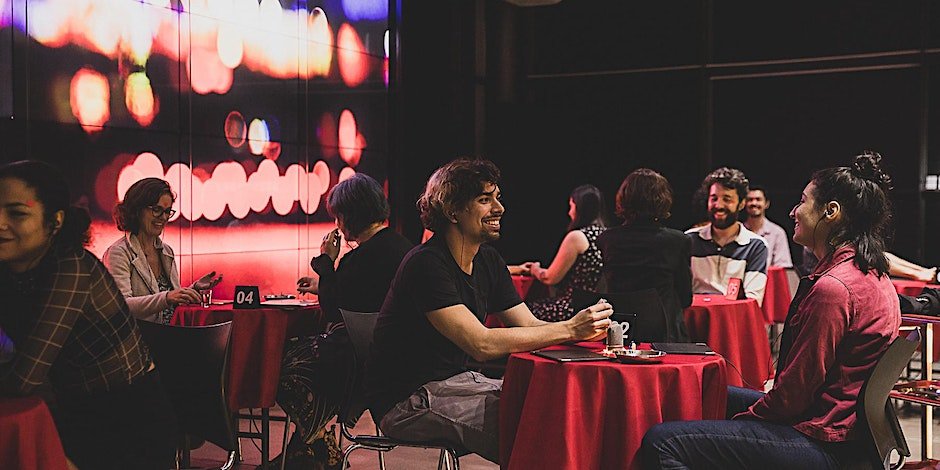This is a trilogy of improvised immersive operas; each takes place in a tunnel under Southwark Bridge, and uses a similar structure. 3 “sections” of ceremony, all of which are sung by the cast (improvised) and set the audience on an escape room style task. On the whole, the concept is fun (if a bit silly) however the drawn out execution of it (2.5 hours x 3!) is far too long for the content that is actually prepared, and quite reliant on the audience to infer or make up their own story, rather than play by the rules of this invented universe. Like a frustrating improv show, audience members resort to trying to be the most funny or outlandish, which while amusing, means the whole lacks drive and purpose. Furthermore, while it is advertised that the pieces stand alone, indeed they do not. It is unfortunate, as the performers are all clearly very talented, and the seed of the idea is strong….it is simply far too much time for the idea to have true meaning and engagement. Each part of the trilogy is considered below.
Come Bargain:
When the audience enter the tunnel for the first part, the rules of the space are explained, including safety and other considerations. The “guild” are required to sing, we are not, and there are tasks and activities with strict rules and consequences explained. The audience are invited to choose an activity, and spend the time working to solve riddles or create asks of the “uncanny thing” which is restrained at the far end of the tunnel. Initially, the stake feel high, as the audience try to solve issues affecting the local community, however as we move into the second and then third phases of the ceremony, there is no change to the stakes; indeed the scenarios we aim to solve get less engaging and serious, so it is difficult to remain engaged, despite lots of clever physical material. Further, moving between activities while invited, is quite tricky, as the rules of the new activity are not explained…resulting in audience members checking out somewhat, or returning to their first choice. The activities are fun, but lack drive and a reason to keep doing them, so the energy of the evening quickly dissipates, exacerbated by the interval after which the audience come back for more of the same.
Come Worship:
This second of the trilogy focussed on joy and worship, participants were offered the opportunity to create gifts for the uncanny king, and ask for blessings. It was interactive, without respite — there is no hiding or observing, with actors in your face, and the expectation that you will play along and make activities and objects. The instructions were quite murky, and the rules of the universe unclear; particularly if you had not attended the previous part of the trilogy, I think audience members would be lost. Furthermore, while there was much activity, the connections and actions lacked tension and purpose, we weren’t driving anywhere. Despite that ineffectiveness as a piece of theatre, the production did succeed in another area, which is creating connection. The individuals at the performance were clearly hungry for connection, collaboration, and debate, playing along with the production, often creating their own version of the rules of the world, which seemed to work to move things along, although again, rudderless without a clear objective, purpose, or goal to the evening.
Come Murder:
The third and final instalment of the trilogy, Come Murder was the least structured. Audience were brought into the tunnel, and immediately dove into the world....but with the least explanation of all the pieces of the trilogy. Audience members who had not been in previous performances were lost, and the clarity between the tasks for the participants was murky. This time, there was no ceremony, and only 2 parts — time to put restrictions or bring uses to the thing, and then time to debate over which to do. The first section was allotted too much time, and lacked sufficient structure to keep the audience engaged, and after some time several audience members ran out of ideas and purpose; they did stand around talking to one another (about the play) however had stopped interacting and engaging with the design and structure of the show. The second section was for a debate about what to do to the thing...however outside the thing’s death, the consequences and implications were weak, and the debate itself devolved into a rather loud shouting match at times, with playful but at times screeching voices. The mood on the whole was fun and playful, but again here, it lacked purpose and drive. It was a fun (if odd and silly) evening, but not exceptional theatre.










